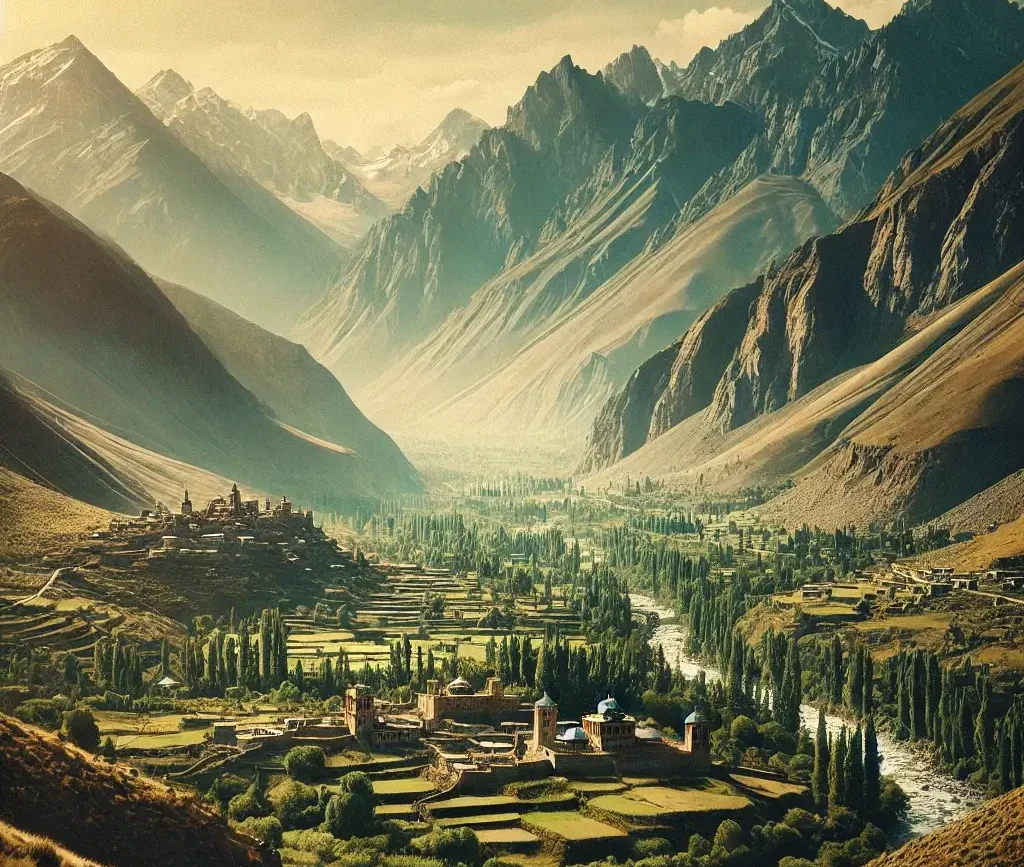Nagar Valley, nestled in the heart of Gilgit-Baltistan, Pakistan, is steeped in rich history that spans over a millennium. Once an independent principality for more than 1,200 years, Nagar became a significant location during the Anglo-Brusho War of 1891, when the British took control after intense local resistance. This conflict, known locally as Jangir-e-Lae, marked a pivotal moment in the valley’s storied past.

The valley is divided into two tehsils, Nagar-I and Nagar-II, each home to unique cultural and geographical features. With its dramatic landscapes, including views of the Spantik peak, also known as the Golden Peak, Nagar Valley remains a place where history intertwines with the natural beauty of the region. Amid the stunning backdrops, the main town of Nagar Khas stands as a historical testament to the valley’s former statehood.
Beyond its complex history, Nagar Valley captivates with its breathtaking vistas and a sense of timelessness that draws visitors into its enchanting embrace. The narrative of the valley’s past, from autonomous rule to British conquest, provides a fascinating backdrop for exploring this remarkable region.
Historical Overview of Nagar Valley

Nagar Valley, located in the Gilgit-Baltistan region, carries a rich historical tapestry. Its history extends over a millennium, showcasing periods of independence, colonial influence, and cultural diversity that shape its unique identity today.
Origins and Early History
The origins of Nagar Valley trace back over 1,200 years, during which it evolved into a culturally diverse area. The valley became recognized for its vibrant mixture of ethnic groups, chiefly the Burushaski and Shina speakers. This linguistic diversity enhanced the valley’s cultural richness, with the addition of Bedeski speaking inhabitants. Its early development was deeply intertwined with the harsh yet stunning mountainous environment, which influenced the socio-economic practices of its residents.
Formation of Nagar State
The state formation period was pivotal, defined by the establishment of a princely state that endured for centuries. Before British intervention, Nagar was governed independently, maintaining its distinct traditions and political structure. This era ended with the Anglo-Brusho War, locally known as Jangir-e-Lae. The battle culminated with British control in 1891, altering the political landscape significantly while integrating western administrative practices within existing local systems.
Nagar Valley in Gilgit-Baltistan
Today, Nagar Valley is a vital part of Gilgit-Baltistan, divided administratively into two regions: Nagar-I and Nagar-II. This division reflects both historical boundaries and modern governance applications under Pakistan’s jurisdiction. The valley’s history contributes to its current status as a peaceful and strategically significant area. Its educational advancements and cultural preservation endeavors are remnants of both its independent past and post-colonial transformations. The continued development in this valley displays a blend of historical legacy and modern aspirations.
Cultural Significance and Modern Developments

Nagar Valley holds a rich cultural heritage, deeply influenced by the traditions of the Kho people, alongside its evolving identity shaped by modern influences and growing tourism. These factors illuminate the unique blend of past rituals with current advancements.
Kho Culture and Traditions
The Kho people form a significant part of Nagar Valley’s rich cultural tapestry. Their traditions are reflected in local music, dance, and festivals, which hold vibrant expressions of identity and heritage. Traditional instruments like the surnai and damama are central to festivities, enlivening events with resonant melodies.
Festivals like Ginani, celebrated in anticipation of a bountiful harvest, underscore the communal spirit and agricultural roots of the Kho. Shamanism, once prevalent, still influences some cultural practices, marking the valley’s unique spiritual fabric. This cultural depth enriches the lived experience in Nagar, fostering a community grounded in its ancestral past.
Modernization and Tourism
In recent years, modernization has increasingly shaped Nagar Valley, bringing infrastructure improvements and enhanced connectivity through the Karakoram Highway. This development has facilitated better access, drawing tourists eager to explore its stunning landscapes and historical sites.
Tourism has become a cornerstone of the local economy, with attractions like the ancient forts gaining attention. Guesthouses and guided tours are growing, offering visitors an immersive experience. As tourism increases, careful management is needed to balance economic benefits with the preservation of Nagar’s cultural and natural environments. This balancing act is crucial for maintaining the valley’s allure while respecting its traditional roots.
